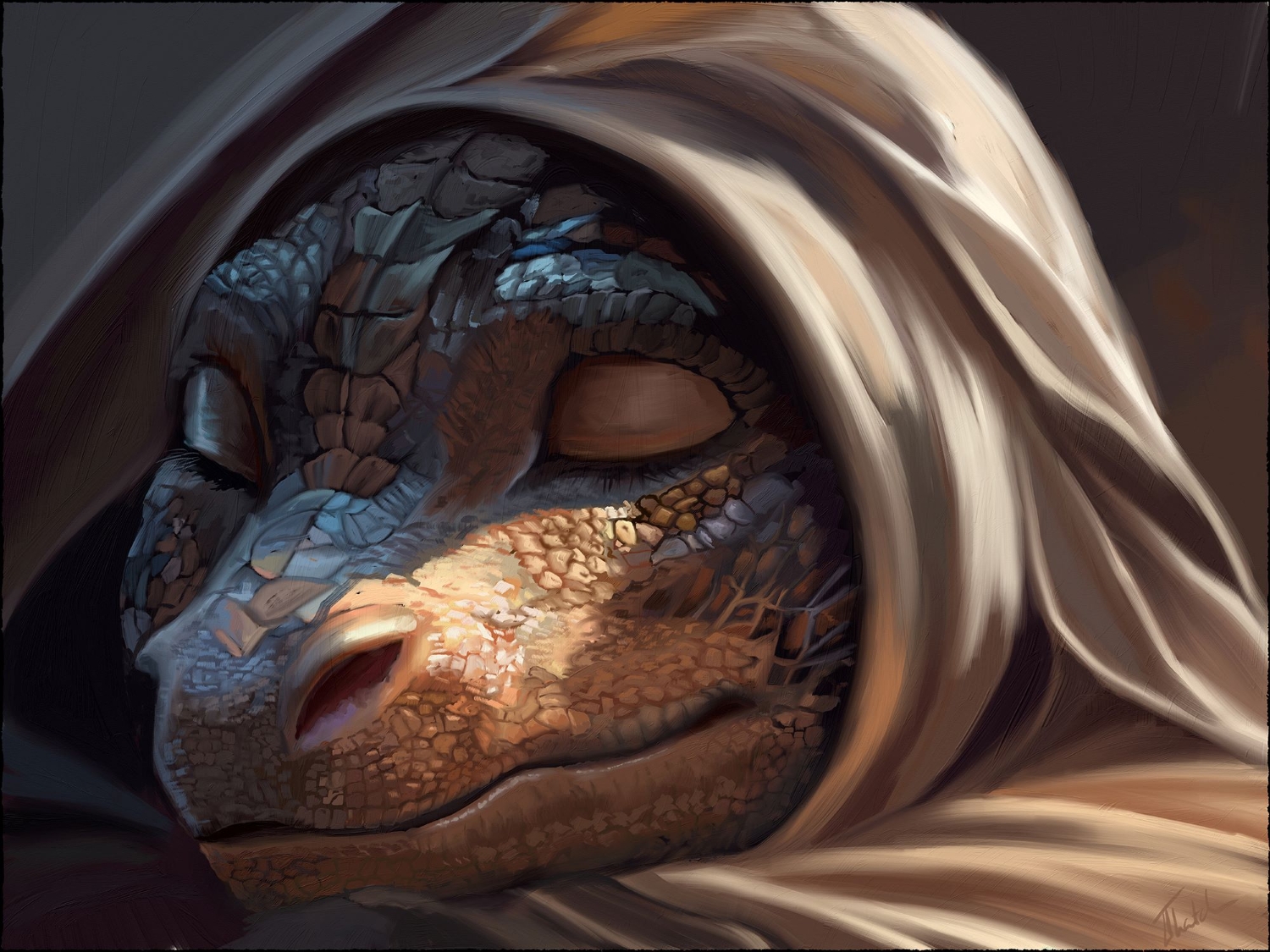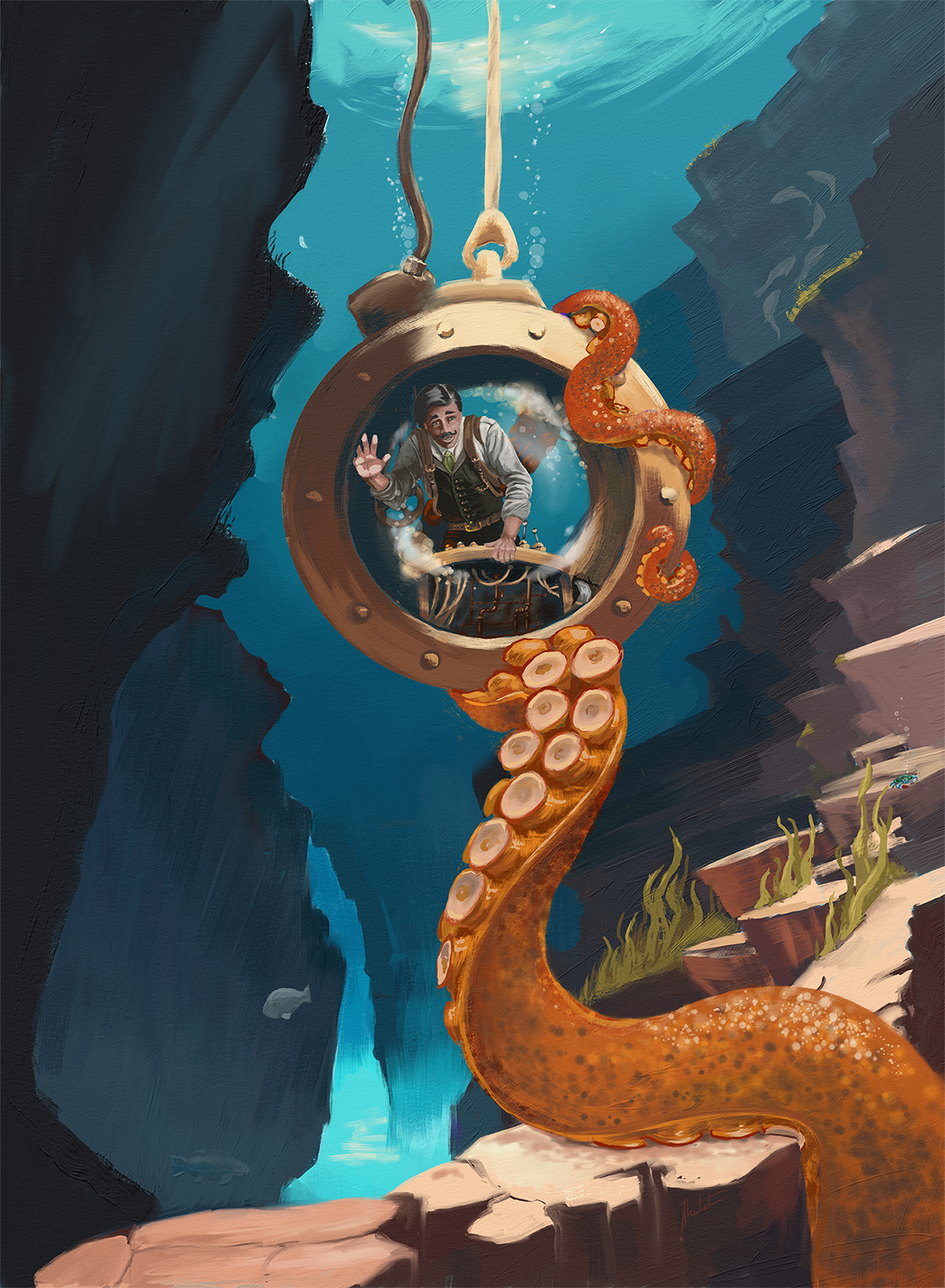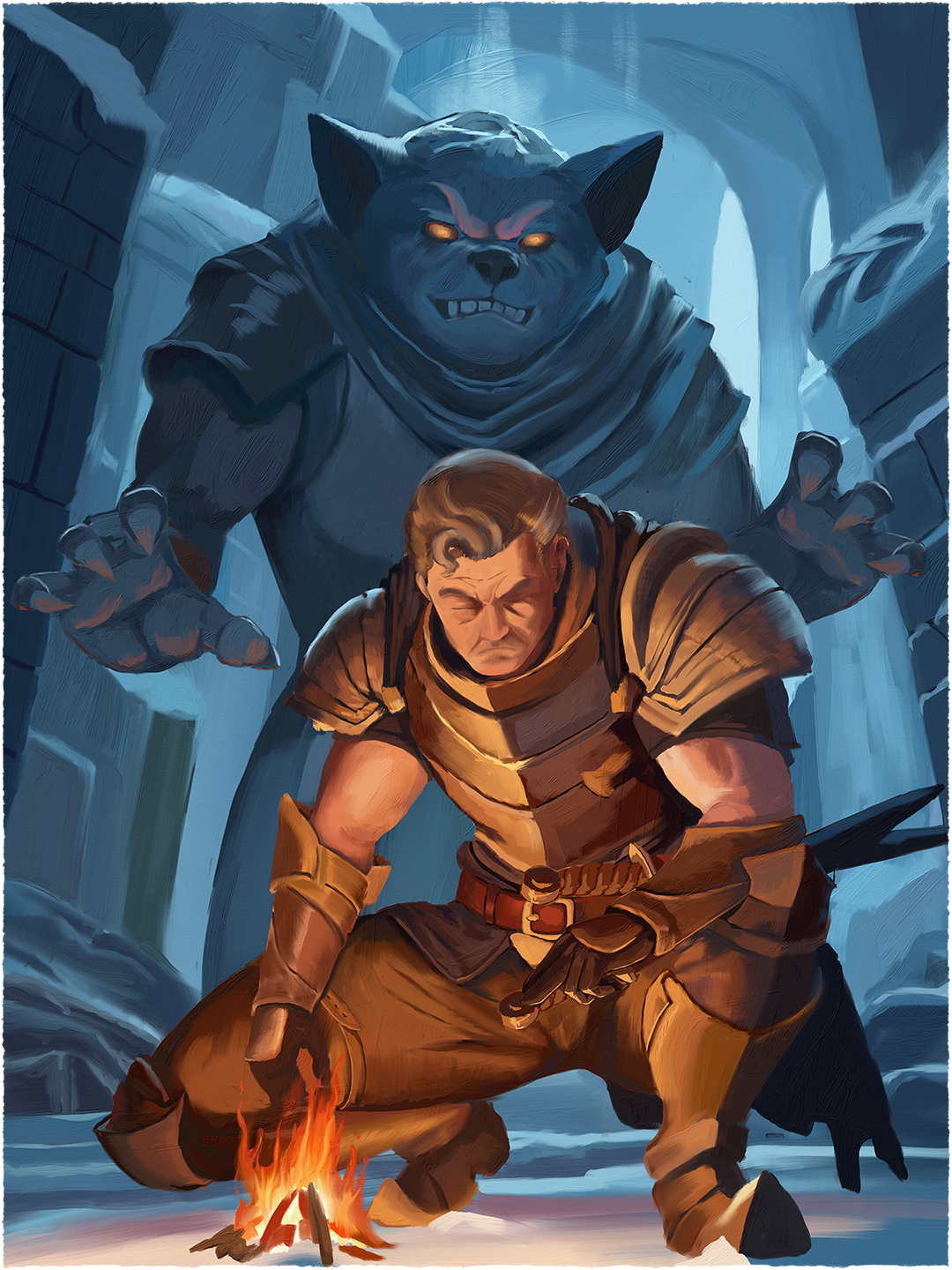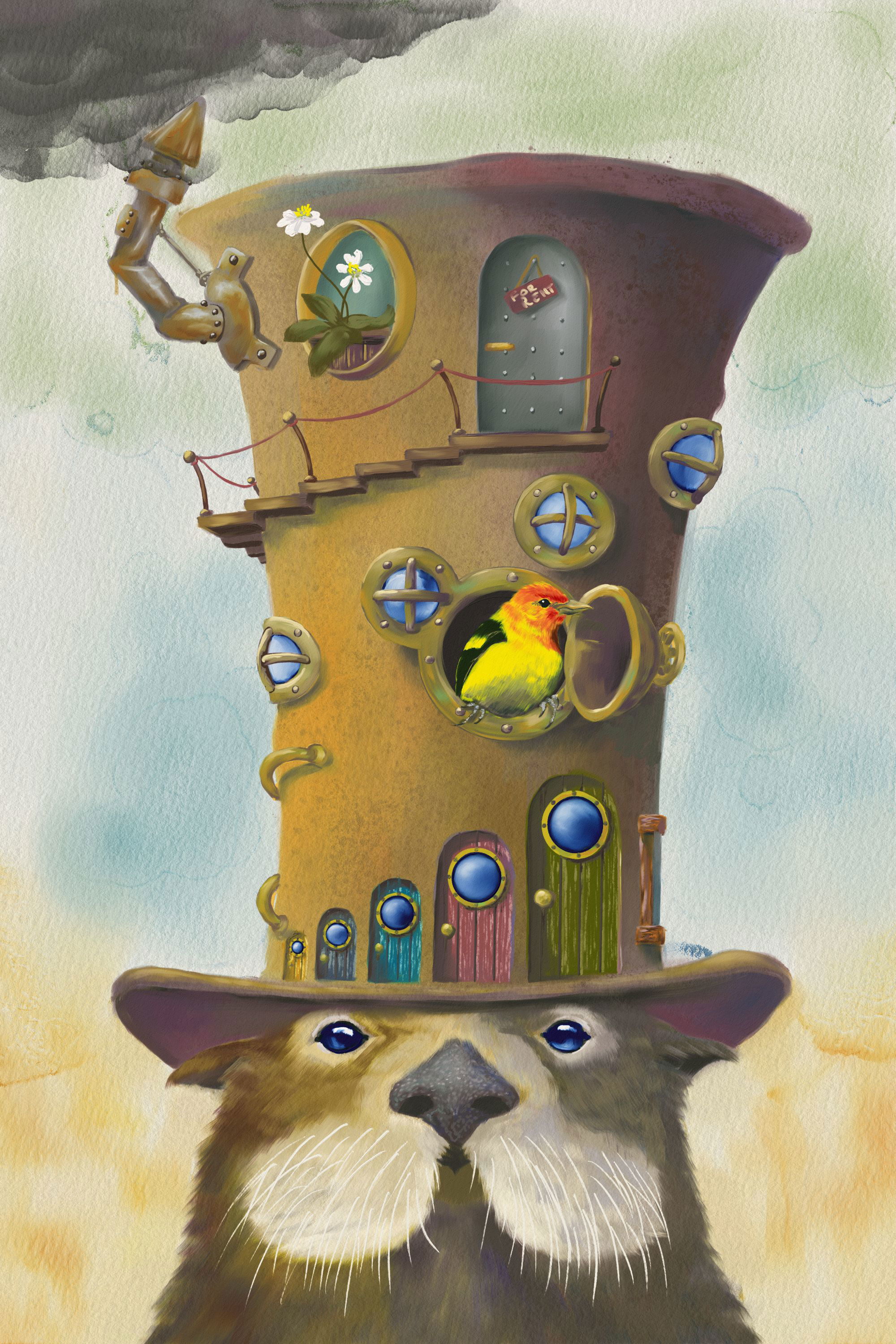Introducing Rebelle Featured Artist, illustrator, steampunk and fantasy enthusiast, Thatch Durbin. Read this interview to learn how he connects the real world and job with the fantasy day-dreams and his passion for art.
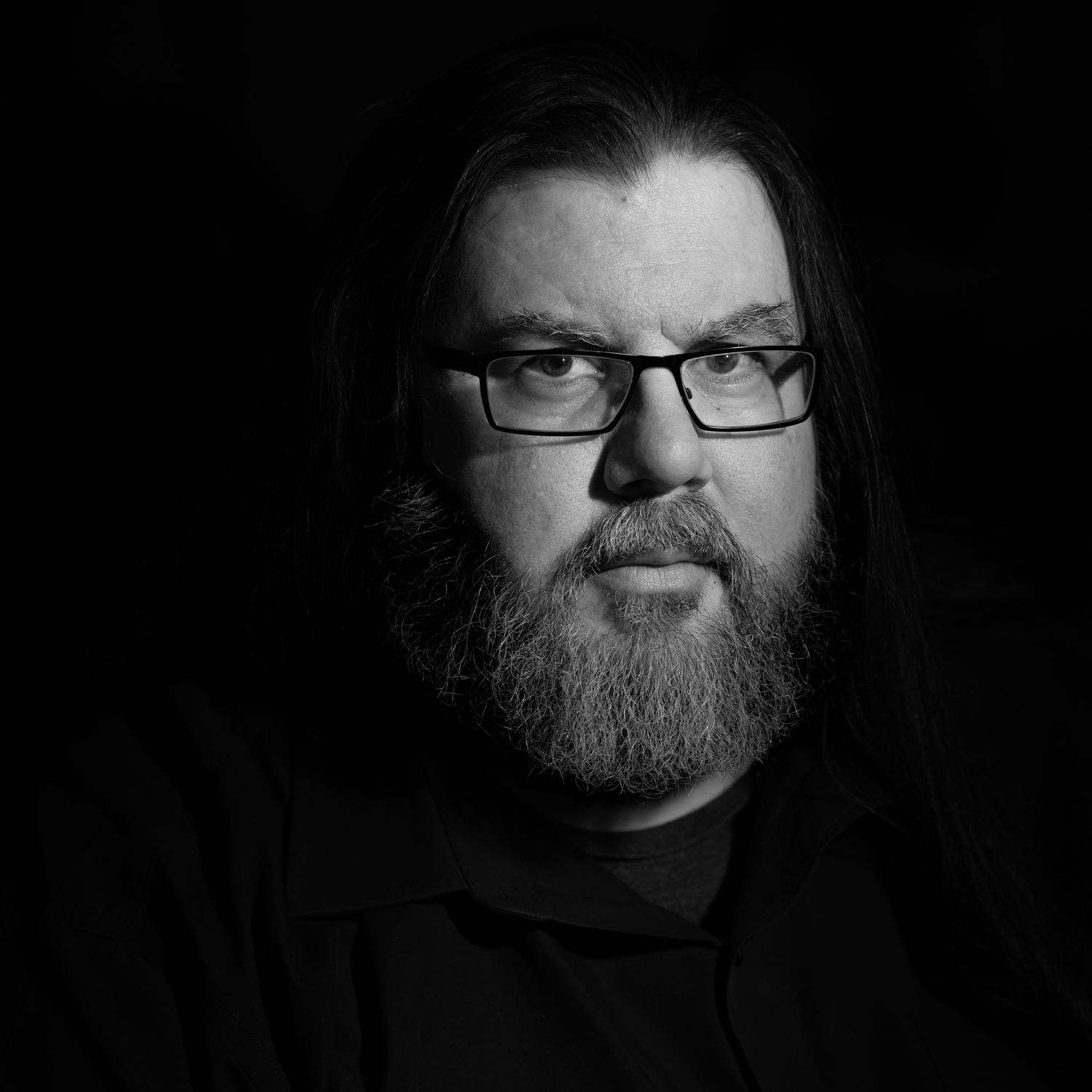
A freelance artist and full-time engineer, Thatch Durbin found himself in the situation of needing to draw his primary income from technical fields. Not satisfied with the limits of such a career, he sought out creative side jobs and opportunities to grow and learn as an artist. This slow approach afforded him the ability to explore multiple options, including craftsman, graphic artist, technical illustrator, creative director, and making fine art. Today, Thatch is inspired to share unseen worlds. Seeking to create works that combine the little moments that hold our lives together with the fantastical world in his dreams, he hopes to present them in a way that will spark imagination and emotionally resonate with others.
Hello, Thatch. Thank you for taking the time to answer our questions. Let´s start with a hypothetical question. If you could live in a fantasy world of your creation, what role would you play—hero, inventor, artisan, or something else entirely?
I don't think I want to live in most of the fantasy worlds I have created. Fantasy worlds reflect and amplify the needs we have in our own realities. They have heroes because we need more of them, inventors because we want to believe human creativity will solve our problems. It is important to create such worlds to inspire and affirm what can be. That said, if I had to actually live in a world of my own creation, I would definitely create a world where I could relax, marvel at its wonders, and since any world I would make would value those who dedicated themselves to a craft, I guess an artisan it is.
"For the longest time, digital options were not organic enough for me. I was never happy with how digital brushes felt like stamps being smeared across the artwork or how colors lost saturation when blended. I felt little motivation to develop a style around the limitations of digital work when my time could be put toward more traditional media. Rebelle changed that for me."
In a steampunk setting, which magical artifact or invention would you dedicate your life to perfecting?
Without a doubt, I would find something to obsess over, but I didn’t wait to get isekaied (meaning: transported to or reincarnated in a different, strange, or unfamiliar world) into a fantasy world for that. I have spent the last 20 years working with flow cytometers. While they may not be powered by mysterious alchemy on an alternate timeline, they are amazing systems even if they are more science than sci-fi. When you engage both the analytical and creative mind to solve issues, then suddenly it's a world of lasers causing microscopic light shows, fluidics, and electronics controlling the movement of cells precisely so they are where you need them when you need them there, it's a bit like biopunk in the real world.
It also comes with the added perk that I know my work has enabled thousands of doctors and researchers to make the world a better place. Sometimes we have to make hard choices, and the outcome may take us down a road that we never wanted. So don't wait for a magic world to do something you can be proud of, and don't let that stop you from pursuing your creative dreams. Life is too short to fill it with regrets.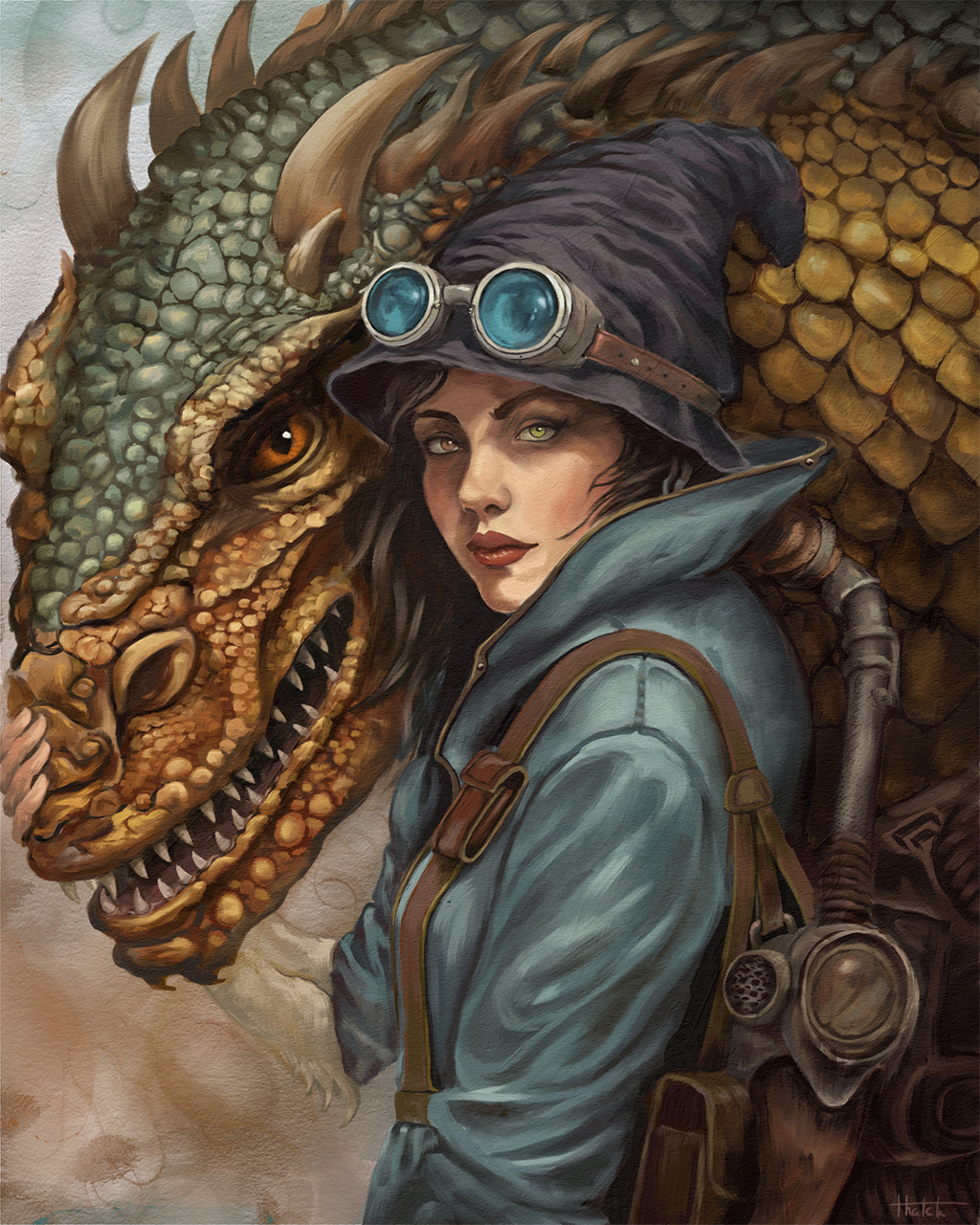
What’s your favorite element of steampunk culture, and how does it influence your creative work or hobbies?
I have a lot of love for the people in steampunk, and the local culture is one of radical acceptance and really welcoming, so I am grateful for getting to be a part of it. That said, I never meant to get so involved in steampunk.
Like many who create steampunk items, I was already making art within the aesthetic long before I knew it had a name. I jump around between and mixing different genres frequently and the first steampunk-like drawings were in the early 90s. They were heavily influenced by the classes I was taking in college. I was doing technical drawings for an archeology publication at the time, and working as a repair technician so that probably played a part in it as well.
I only got heavily involved when the local community wanted to start a new event. As it turned out, the local Anime convention, Fanime, was steampunk themed that year and needed content. I connected the two groups and it proved to be a mutually beneficial situation. The Anime convention agreed to provide the backing for a new event, which would give us a venue, train the staff, but in return, I had to promise to run it. The efforts of both groups turned into Clockwork Alchemy, which I believe is currently the longest-running USA West Coast Steampunk convention.
So my involvement has been more about supporting a local artist and fan community than it was about my own art journey. I still help fill in for the art needs of the convention and currently I serve on the Board of Directors for the 501.3c educational non-profit that backs not only the original steampunk event but other events including a very large Anime convention that is dedicated to fostering an appreciation of the culture, art, and media of Asian and other underrepresented subcultures.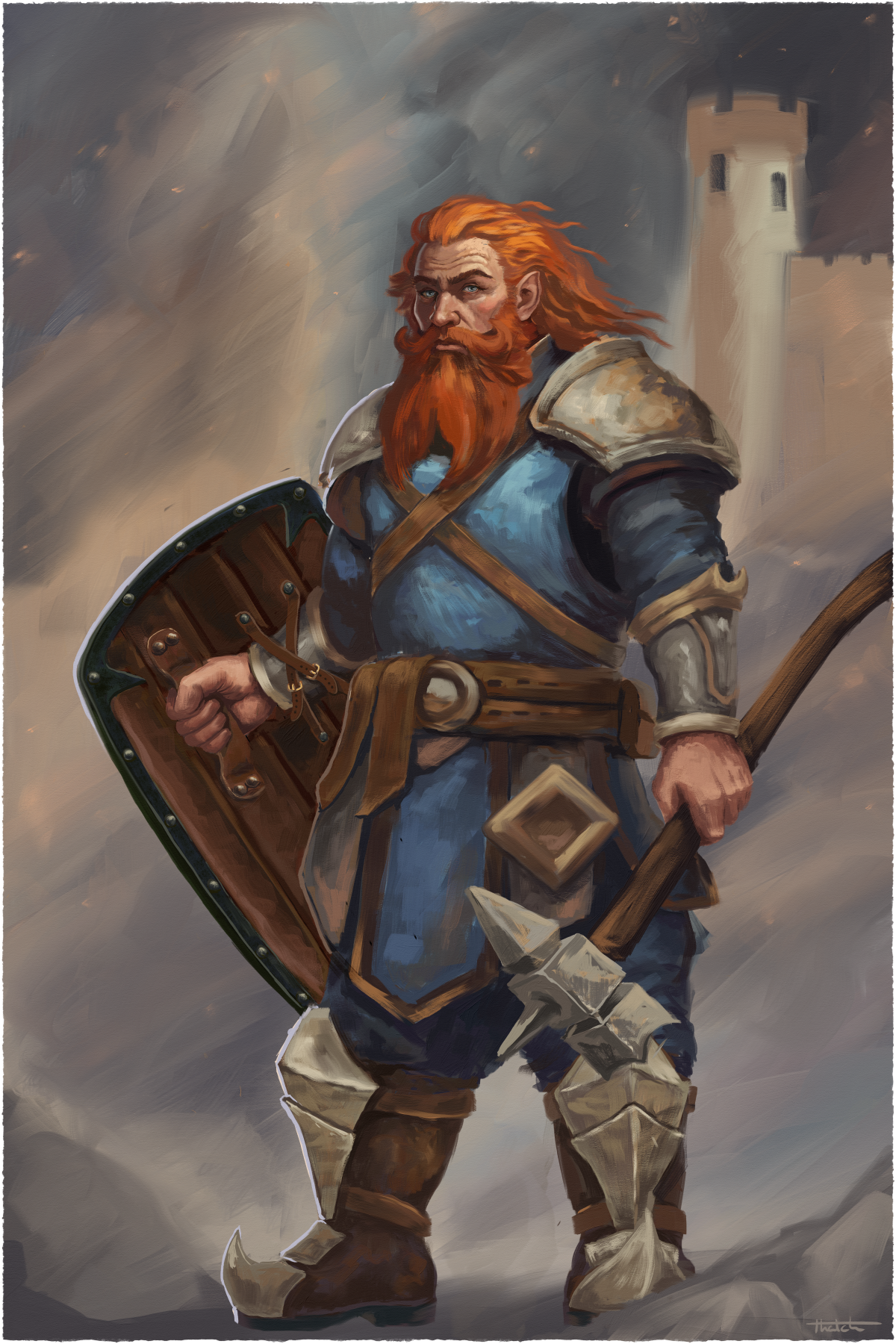
"Often a day's events will cause me to have fantastical dreams that then inspire me to try and recreate those images or feelings. Being able to express these worlds through art recharges me, but more than that, it helps me keep an open mind, relaxed and ready to take on the challenges life throws at me."
Many steampunk enthusiasts love hands-on projects. Do you have a favorite DIY creation, and what inspired it?
Probably my favorite project was taking a 350-pound 120-year-old Rudd water heater and turning it into a modern on-demand hot water source for making tea. Need drives most of my physical projects. In this case, an event was attempting to serve nearly 3000 cups of tea over a couple of days. They needed a solution that fit within a number of design constraints, not least of which was that it was to be visually interesting and would allow us to educate those who were curious about how to do similar projects.
In a world where you’re constantly juggling work and passion art projects, how do you find the balance between “real life” and your creative pursuits? How does an option to paint digitally help you in this matter?
Balance, I wish I could claim I have found it. There never seems to be enough time for creative pursuits. You have to enjoy the creative process in whatever form that takes for you. For the longest time, Digital options were not organic enough for me. I would use it when I had to or for graphic design work but the truth was I was never happy how digital brushes felt like stamps being smeared across the artwork or how colors lost saturation when blended, in essence I felt little motivation to develop a style around the limitations of digital work when my time could be put toward more traditional media.
Rebelle changed that for me. It allowed me to work on the bigger projects without the prep time or having to worry about cleanup. I get the satisfaction of seeing the creation come to life, without sacrificing the little parts of the painting process. I get pleasure from mixing and blending paints, or the organic interactions of wet media, texture, and gravity, as they inject a sense of randomness and discovery as part of the artistic process. While it will never replace traditional media, Rebelle bridged the gap for me, bringing the sense of satisfaction to digital work and the freedom needed to work around my often busy schedule.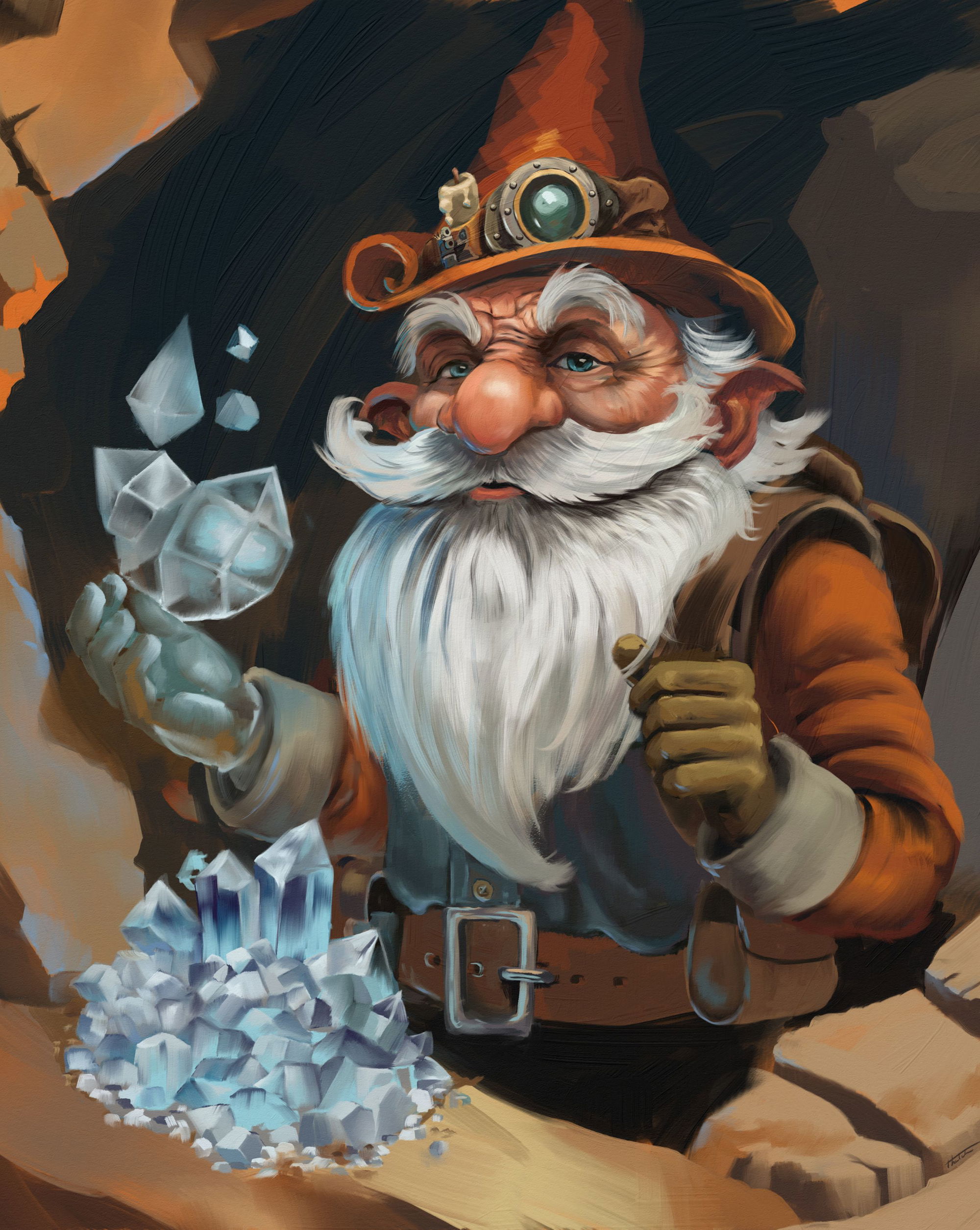
Do you feel that your professional life and your artistic or hobbyist side feed into each other, or do they stay separate worlds?
For me, everything is connected. My day job, hobbies, and volunteer work all feed into one another. Often, a day's events will cause me to have fantastical dreams that then inspire me to try and recreate those images or feelings. Maybe it's me riding planet-sized cells, watching the horizon light up under a violet laser-powered sun or strange utopian cities on the backs of whales swimming across the sky. Being able to express these worlds through art recharges me, but more than that, it helps me keep an open mind, relaxed and ready to take on the challenges life throws at me.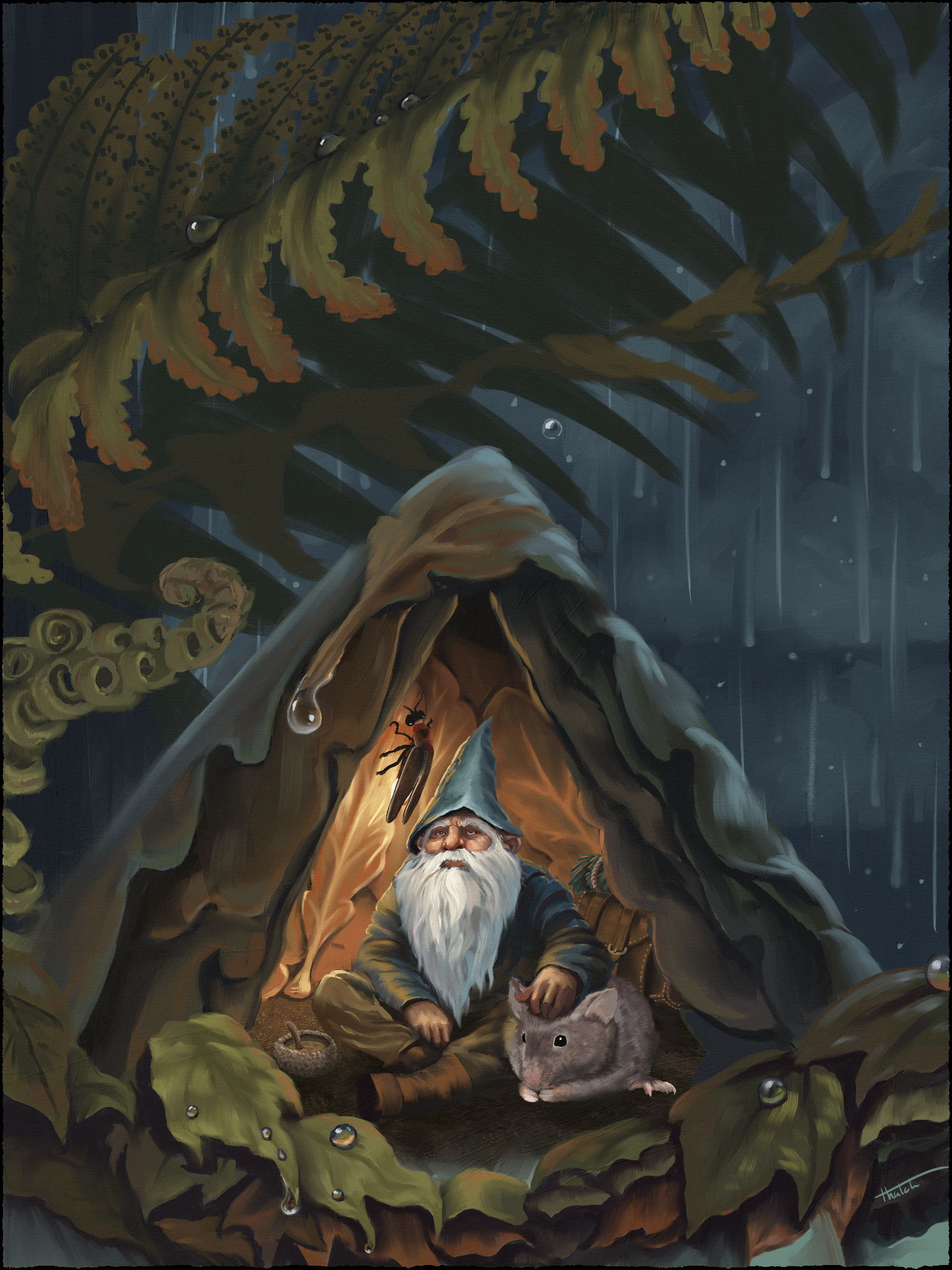
What advice would you give to someone looking to infuse their daily life or career with the sense of adventure found in fantasy or steampunk worlds?
So much of what the world is or could be is shaped by our perception. Start by letting your imagination stretch its legs a little. When we were kids, even if things were difficult, we engaged our creative minds in play, and our everyday world became an adventure. At some point, most of us get told to stop daydreaming, study, get to work, be more realistic, or some other demand to repress this side of ourselves. It pushes us to compartmentalize that imaginative side away from other areas of life.
So if you want to infuse your more imaginative side back into other aspects of life then allow yourself to be true to who you are. It’s a trap how we pressure ourselves to conform and give away so much of our creative outlook to fit into the mold of what we think others expect. Repressing a part of yourself that does not fit in does not make you a better member of the group, it limits your enjoyment of everyday life and stifles your ability to contribute and express yourself naturally.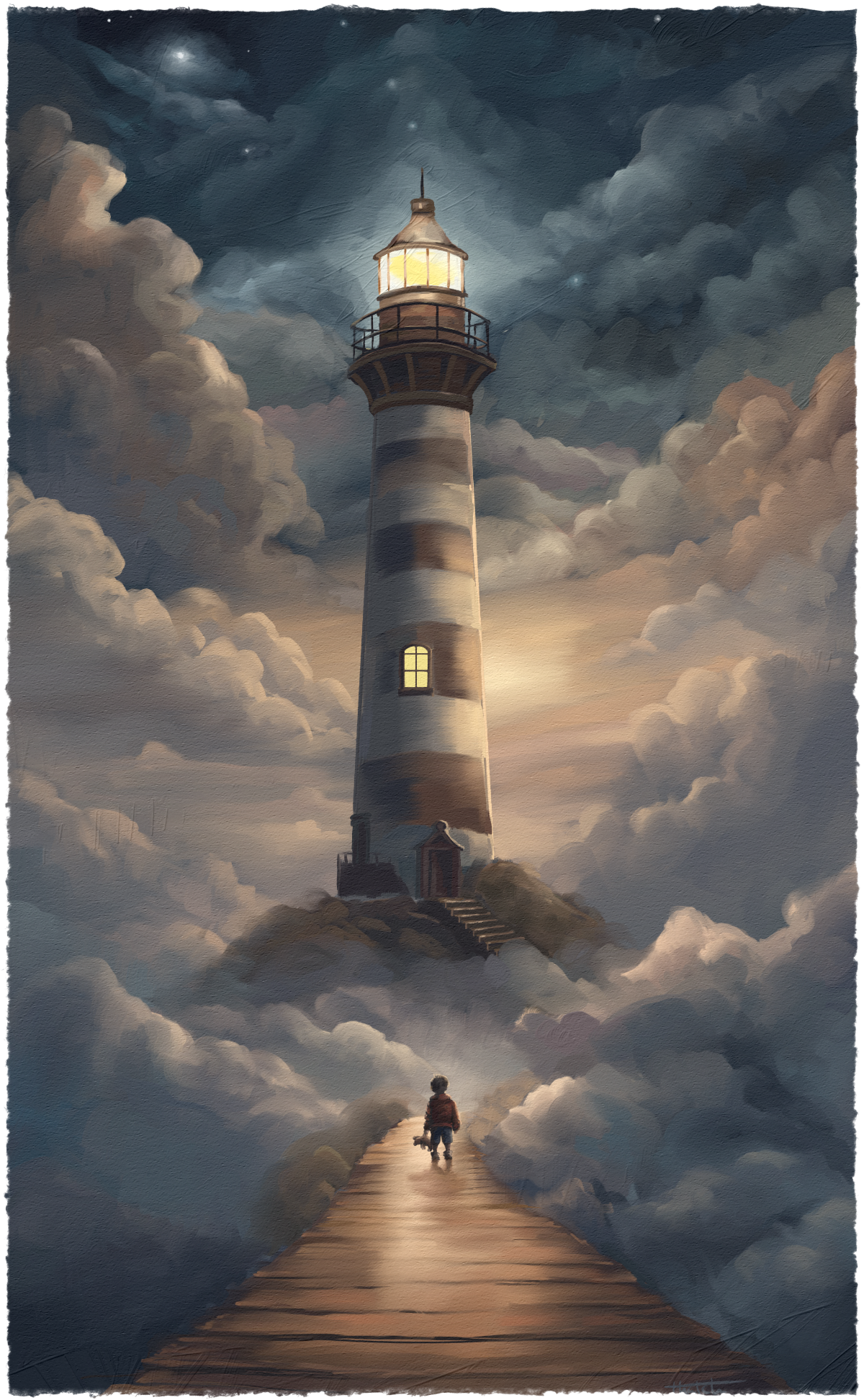
Thank you, Thatch, for inviting us to the fantasy worlds you are working on. We are excited to see your community grow, bringing more creative ideas and inspiration for your future projects.
Escape Motions Team
-----
Learn more about Thatch Durbin: www.escapemotions.com/featured-artists/thatch-durbin

